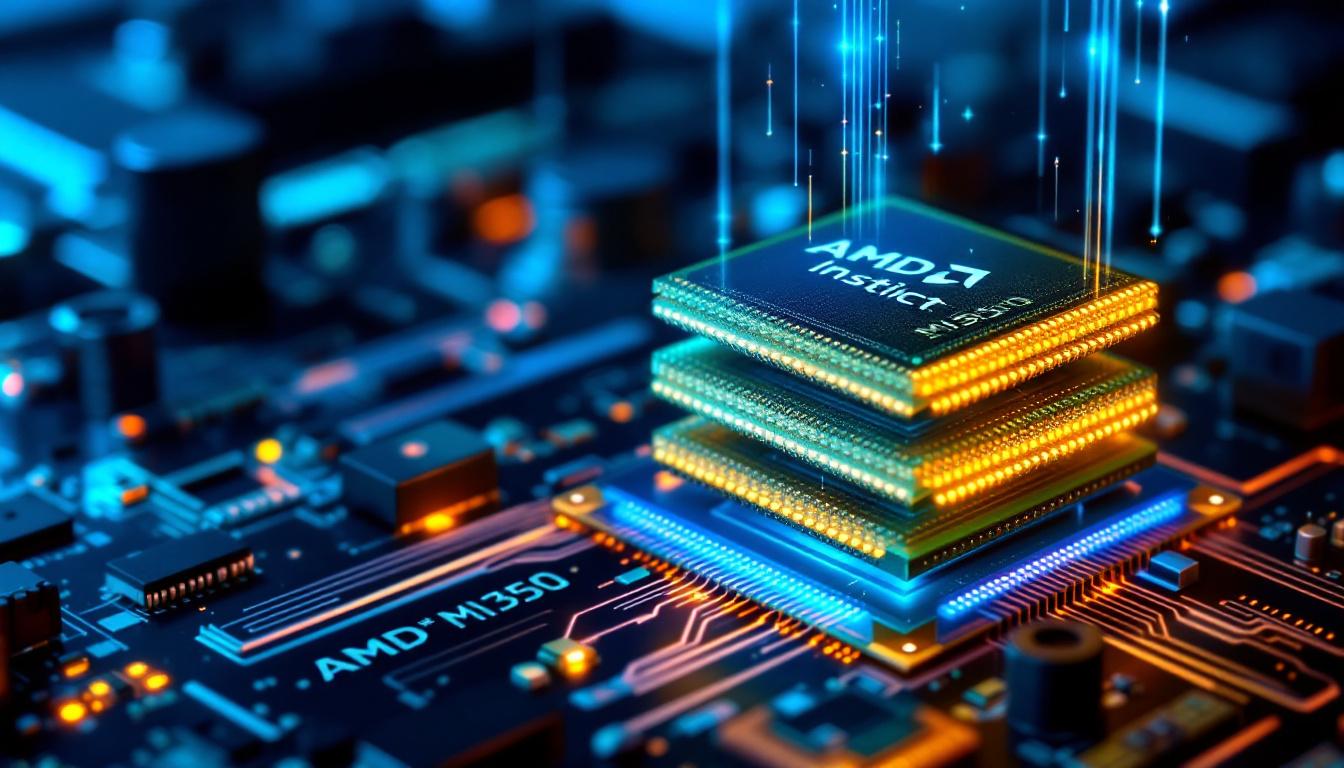AI is changing the world at lightning speed—smart cars, chatbots, robotics, and more. Behind all this is one silent battle: Who will build the best AI chips? For years, Nvidia led the pack. But now, AMD’s latest chips, the Instinct MI350 series, are going toe-to-toe with Nvidia’s much-hyped Blackwell GPUs.
This battle isn’t just about technology—it’s about billions of dollars, booming stock prices, and the future of how we live and work.
The News: AMD Steps Up
Recently, HSBC analysts shocked the tech and investing world with a big statement: AMD’s newest AI chips perform just as well as Nvidia’s Blackwell line. That’s a huge deal. For years, Nvidia has been nearly unbeatable in the AI hardware world. This announcement could signal a shift in who leads the next era of artificial intelligence.
In response, HSBC upgraded AMD from “hold” to “buy” and raised their price target for AMD shares to $200—doubling their earlier estimate.
Why This Matters
For everyday people, AI chips might sound boring. But they power everything from video games to ChatGPT. Better chips mean faster, smarter innovations. For investors and tech lovers, this competition often means better products and, sometimes, lower prices.
And then there’s the business story: Stocks react quickly to big leaps in tech. On the day of the HSBC report, AMD shares rose over 4% while Nvidia’s stayed flat.
AMD vs. Nvidia: The New Race
AMD has long played the underdog to Nvidia. But the Instinct MI350 is changing the conversation. According to AMD, the MI350 offers up to four times the computing power of its last generation—and now stands shoulder to shoulder with Nvidia’s B200 Blackwell chips.
HSBC’s team, led by analyst Frank Lee, said, “We were pleasantly surprised…implies the MI350 series can compete with Nvidia’s latest-gen AI GPU.” Even more, AMD’s newer MI400 line is already in the works and expected to launch next year, chasing Nvidia’s next breakthrough, the Vera Rubin platform.

What Makes the MI350 Series Special?
The Instinct MI350’s secret is deep in the design. These chips:
- Deliver four times the performance of earlier models
- Compete side-by-side with Nvidia’s Blackwell B200 for AI workloads
- Are attracting major customers—OpenAI, creator of ChatGPT, is said to be lined up for future AMD chips
- Feature enhancements that allow higher efficiency, which means more power with less energy
The “premium” for these chips—the price buyers are willing to pay—has jumped as a result. Big names in tech are watching closely.
How Are the Markets Reacting?
No surprise, investors are excited. On the day of the HSBC announcement, AMD’s stock shot up, reflecting fresh confidence in its technology and strategy. Nvidia’s shares, which had already soared as it crossed a $4 trillion market cap, held steady.
But for the first time in a while, traders and analysts are asking: Is AMD about to break Nvidia’s dominance?

Big Names Behind the Launch
AMD’s CEO Lisa Su has been front-and-center at every major launch. Sam Altman, CEO of OpenAI, also shared the stage as a key customer. Their partnership shows that AMD’s tech is more than just hype—real innovation is being used in the world’s fastest-growing AI companies.
Nvidia’s Strength—and New Competition
Nvidia isn’t going anywhere. Their chips are still the gold standard in many labs and data centers. Nvidia’s software and ecosystem are unmatched, making it easy for developers to build powerful AI tools.
But AMD’s push means customers, especially the biggest tech firms, finally have real choice for AI chip power. More competition means faster improvements and more scalable solutions for companies building tomorrow’s AI products.
What’s Next: The MI400 and Beyond
AMD isn’t stopping with the MI350. The MI400 series, announced recently, aims to take on Nvidia’s Vera Rubin platform—scheduled for late 2026. These launches, and the innovation driving them, guarantee that the AI chip race will remain white hot.
If AMD keeps pace, the revenue boost could be huge—HSBC projects more earnings upside well into 2025 and 2026.

What Does This Mean for AI?
Better hardware trickles down to every user. More powerful and efficient chips mean smarter home assistants, better medical diagnostics, faster language models, and amazing experiences in gaming, science, and education.
It also means the “chip shortage” could finally see relief, as more suppliers can meet the huge demand for AI parts.
Behind the Scenes: The Human Side
Thousands of engineers and designers at both AMD and Nvidia drive these breakthroughs. Their work is about more than clock speeds—it’s about helping doctors diagnose illness, teachers inspire students, and artists create with new tools.
Lisa Su’s leadership at AMD has inspired a new generation in STEM. Meanwhile, Nvidia’s innovation continues to shape the possibilities of what AI can do.
The Bigger Picture
This isn’t just a tech or Wall Street story. It’s about the future of work, creativity, and daily life. As AMD catches up to Nvidia, giants like OpenAI and Google can roll out smarter products to millions of users.
You won’t see MI350 or the Blackwell GPU on a store shelf—but their impact is everywhere.
Final Thoughts: Why It Matters
AMD’s leap forward means more competition, energy-efficient solutions, and even new jobs in AI-driven industries. Nvidia, once nearly unchallenged, must work harder—meaning rapid progress for everyone.
The next time your phone translates a conversation or your car parks itself, remember: It’s powered by the chips born from this global rivalry.
To Contact Us Click Here .






